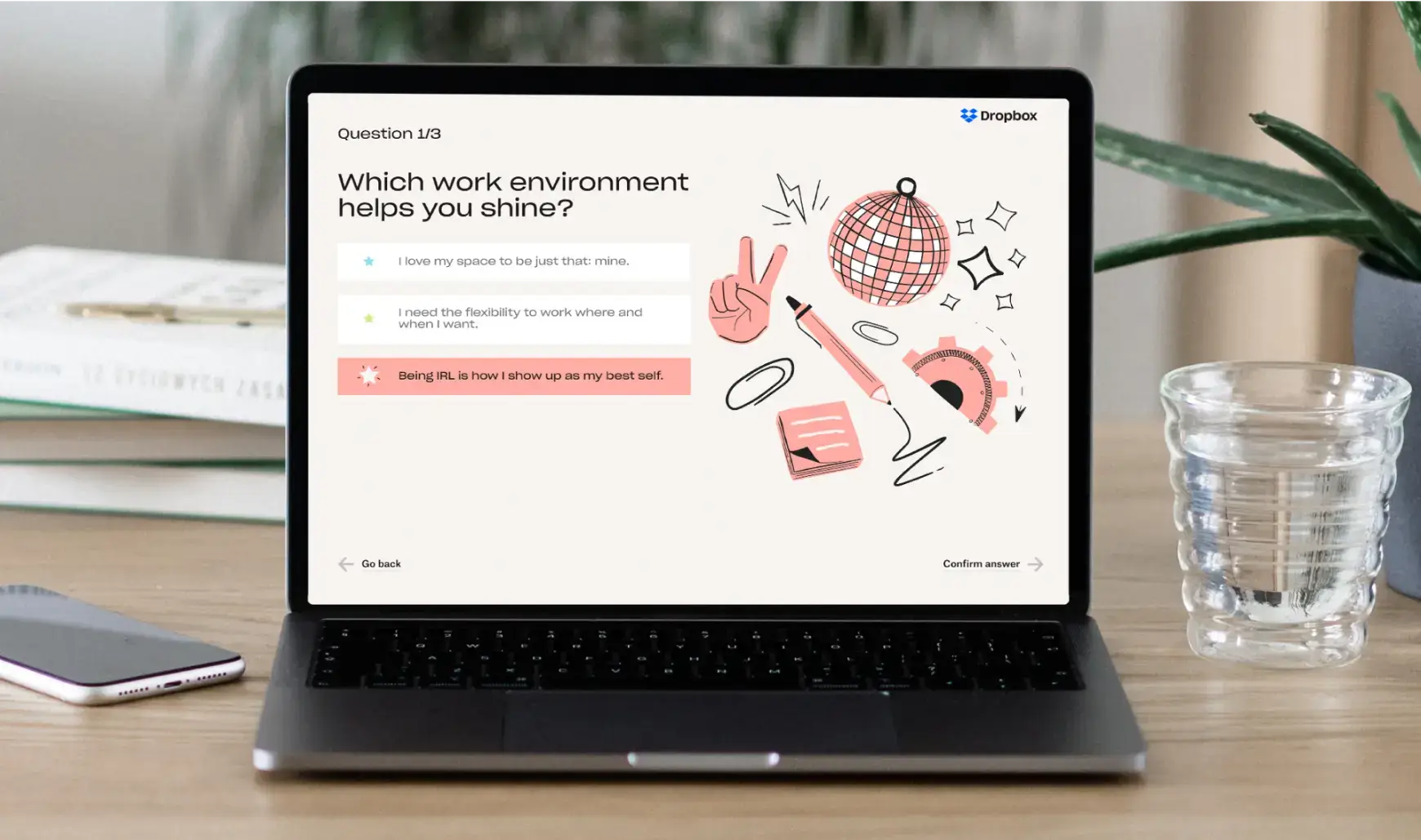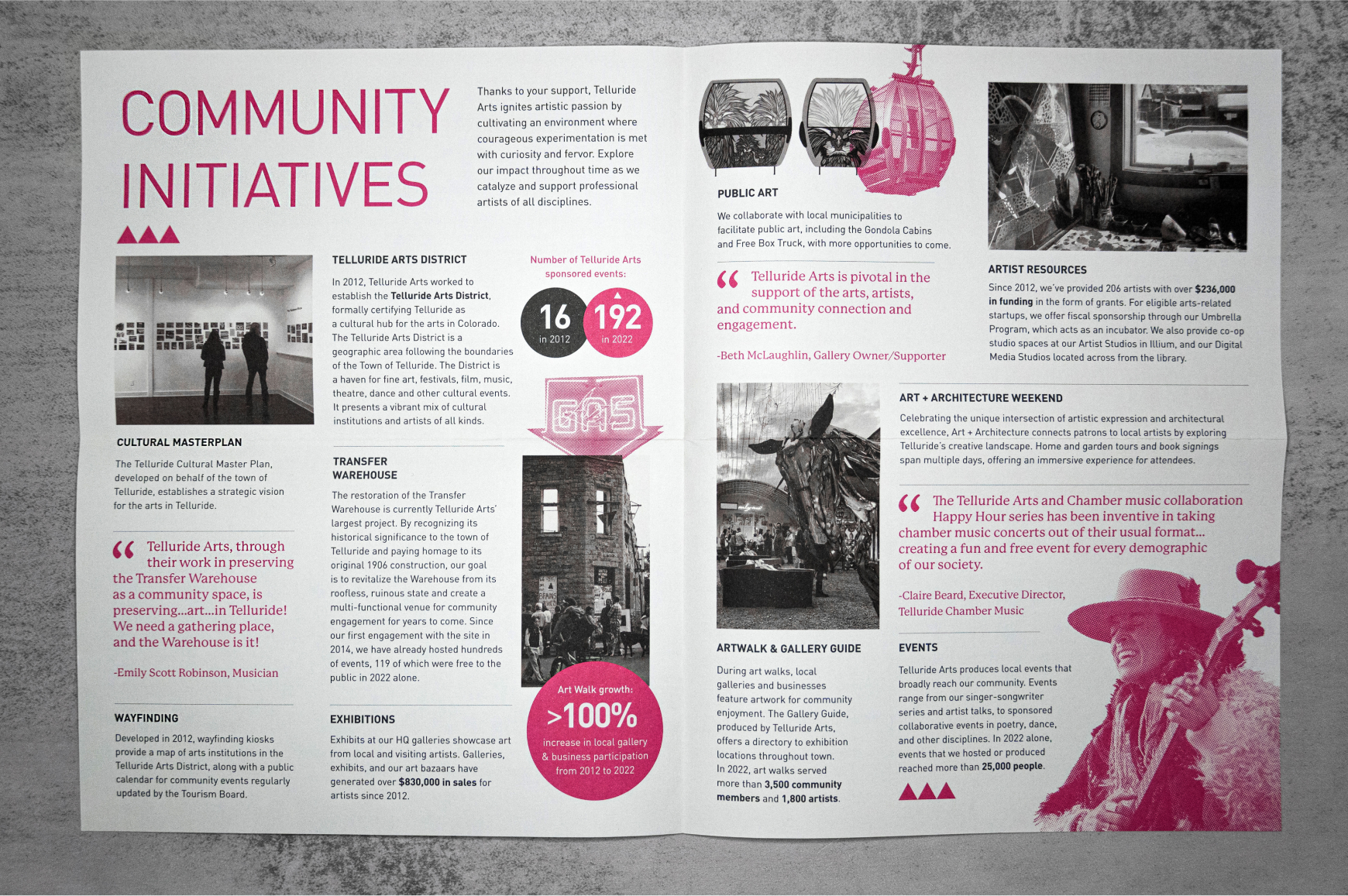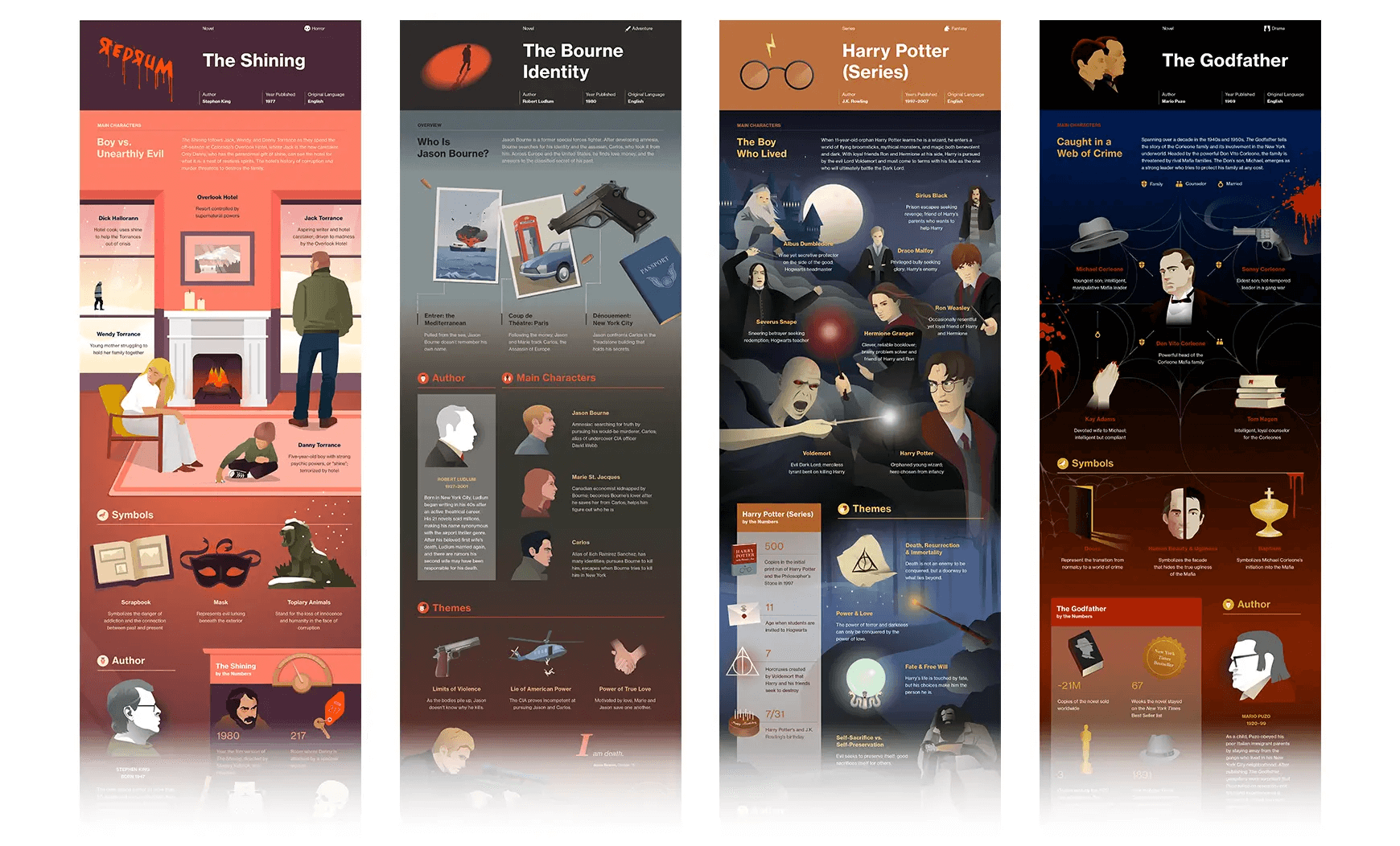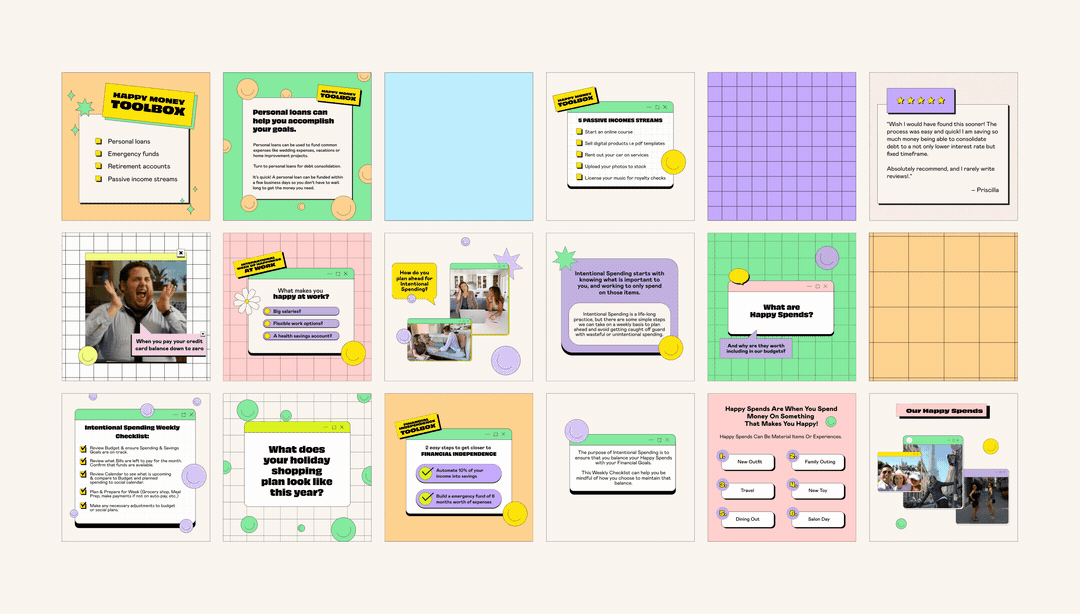In an era when everyone is tired of being talked at and sold to, people crave more genuine connections with brands. They want to know what brands care about, how they do business, who is behind the brand, and more. Ultimately, they want authenticity, honesty, and transparency—the core ingredients of a strong relationship. But how can your brand communicate these things? By telling a strong brand story.
Through the power of story, you can effectively humanize your brand, create connections, and build a lasting community. But telling a strong story requires more than an About page on your website. It’s an ongoing, multi-channel effort that takes thought and effort. Luckily, when you invest in telling your story, you get better ROI, cultivate stronger relationships, and help your brand grow over time.
Of course, this work takes practice. If you’re new to brand storytelling—or not sure what it looks like in real life—let’s take a deep dive into everything you need to know, plus our best tips to do it.

First, What Is Your Brand Story?
Your brand story is, in essence, the story of who you are, what you do, and what you believe—as a brand. Brand storytelling is the act of communicating that story through content.
68% of consumers say that brand stories influence their purchasing decisions.
—The Brand Shop
The more you tell that story at touchpoints across your buyer journey, the easier it is to increase brand awareness and forge stronger bonds with your community.
Why Does Your Brand Story Matter?
As industries become increasingly crowded, and people have more choices than ever, story is the one thing that can help you stand out and maintain a competitive edge. When you can pique people’s interests, bond with them over shared values, or tell great stories that break down barriers between your brand and audience, you make your brand more exciting than your competitors.
But storytelling doesn’t just increase brand awareness; it can have a direct affect on your bottom line. A study by Origin and Hill Holiday found that people spent more on everything from hotel rooms to paintings when products or promos were paired with a story. Similarly, a study by neuroeconomist Paul Zak found that a character-driven story caused people to donate 56% more money to charity.
Perhaps most importantly, consumers actually prefer storytelling to more traditional forms of marketing and advertising.
92% of consumers want brands to make ads that feel like a story, and companies with compelling brand stories have a 20% increase in customer loyalty.
—The Brand Shop
As much as storytelling benefits your consumer relationship, many brands forget that consumers are not their only audience. Your employees also play a huge role in your long-term success. Your brand story is a fantastic tool that can be used to both attract potential employees and connect with your current employees. This helps you retain the best and brightest people, create a better culture, and drive innovation—all of which are crucial to your business.
The Science of Brand Story
Now, we’ve talked about why brand storytelling is so helpful. But why is storytelling so effective at creating connections? Because it triggers a biological response. Whether it’s a video, a print ad, or a novel, a good story can trigger your brain to release cortisol (the stress chemical) or oxytocin (the feel-good chemical). This makes people feel more invested and connected to whatever story you’re telling. (It also explains why you feel anxious while watching a horror film or happy when the lovers finally get together at the end of a book.)
That said, different mediums and storytelling tools can affect us in different ways. For example, video triggers emotional contagion, a phenomenon where our emotions mirror what we see on screen (again, think of the horror film response). Similarly, when we hear someone speaking, such as a narrator in an animated video, it triggers neural coupling, an experience where our brain activity mirrors what a speaker is saying.
Combined, these factors increase our emotional attachment and recall.
55% of consumers are more likely to remember a story than a list of facts.
—The Brand Shop
But packaging a message as a “story” isn’t the silver bullet solution to all your marketing problems. It isn’t just about seeing images or hearing a human voice; it’s the core story that matters. It needs to be interesting, intriguing, or captivating. To do this well, you need to understand what makes a brand story (specifically your brand story) impactful.
The Keys to a Great Brand Story
How do you know which stories will connect with your audience? Ultimately, it comes down to five specific elements. When you tell stories that fall into these categories, you can set your brand up for success from the jump.
- It’s meaningful. Everyone is dealing with content shock. A million brands are vying for attention, hopping on whatever bandwagon their competitors are on. Thus, too many brands are focused on what they want to create (or what other brands are creating)—and not on what people actually care about. If you want to tell a good story, it has to be interesting and relevant to the people you’re trying to reach.
- It’s personal. You can tell all sorts of stories. They can be entertaining, educational, or inspirational. But people need to feel personally connected to them. This is important not just to pique interest but to draw them into the story. How does your brand improve their life? Why should they take the time to invest in this story? Remember: If there is no place for someone in your story, there’s no reason for them to pay attention to it.
- It’s emotional. A strong brand story is all about stimulating emotion and empathy. It’s not just about what you do but how you affect people. Sure, your software may automate emails, but it’s ultimately making people’s lives easier and stress-free. That’s the emotional hook of the story. If you can trigger that emotion in the first paragraph of a blog or the first few seconds of a video, you will have them hooked.
- It’s simple. One of the most common mistakes in brand storytelling is trying to say too much. It’s far better to tell a very simple story and maximize emotional attachment than bombard people with different stories. You could tell a story about large-scale problems facing the healthcare industry, but showing how these issues affect a real patient gives the story a singular focus and makes it easier to connect to. In short, focus on one person or one problem at a time so you don’t confuse or distract your reader.
- It’s authentic. When you share your brand story, people should know it’s your story. That means being open, honest, and transparent. It means letting your personality shine through.
You also need to be consistent in your storytelling so that people can not only identify but trust your content.
How to Tell Your Brand Story
Whether you’re telling the story of how you built your business or the story of how your product improves people’s lives, there are so many ways to connect with people across the buyer journey. Here, we’ve outlined the steps to help you create stories that accurately reflect your brand—and align to your long-term goals.
Step 1: Document your core story.
One of the biggest barriers to telling your brand story is not really understanding your own brand—who you are, what you do, what you care about, and why it matters. Without this clarity, it’s difficult to tell the right stories in the right way. So, before you start brainstorming ideas, it’s important to go back to basics.
- Define your Brand Heart. Use our free guide to identify your core principles (purpose, vision, mission, and values), so that you understand what your brand is really trying to achieve.
- Articulate your brand messaging. Consistent messaging is crucial if you want to tell your brand’s story. Use our brand messaging framework to articulate your tagline, value prop, and brand messaging pillars. (Those pillars can be a great source to brainstorm unique stories.)
- Know your target demo. If you haven’t done it before, follow our guide to create personas.
Once you have a clear idea of who you are and what you’re trying to do, then you can begin to examine the stories that will help you communicate that.
Step 2: Brainstorm brand story ideas.
No matter your product, service, or industry, you have an interesting brand story. (In fact, you have a few.) Sometimes you just need to take a step back and look at your day-to-day business. We find there are often many great stories that are waiting to be told—brands just don’t always know how to uncover them.
When you’re trying to come up with ideas, we find it helpful to brainstorm around specific aspects of your brand. We like to ask ourselves a few questions to help jumpstart these ideas.
1) Who Are You?
You aren’t a faceless corporation. A real person (or people) started your brand. Real people work in your office, make your product/service, and run your social media. Putting a face to your brand is one of the best ways to cultivate a connection, so consider ways you might peel back the curtain to show people who you are, what your culture is like, and what you care about. (This is what we call your showcasing your employer brand, and it is a great way to engage potential employees.)
This type of content is especially fun to create because it offers a chance to inject your brand personality—think of things like behind-the-scenes spotlights, employee showcases, favorite things, etc.
Example: For our 10-year anniversary, we told our brand’s origin story and wrote about the biggest lessons we learned in that time.
If you want more inspiration, you can also experiment with these ideas to showcase your culture on social media.
2) What Do You Do?
Think about the product or service you provide. There are many ways to talk about or showcase these highlights beyond traditional sales materials.
Are there unique features that make your product particularly useful or effective? Are there surprising ways people have benefitted from your service? With a little creativity, you can create interesting content that showcases your brand in exciting ways.
Note: Telling a brand story that starts with a challenge or problem is a smart way to do this because conflict creates a bit of stress or intrigue. If you can show your product as the “hero” and provide a satisfying resolution, your story can also provide feel-good oxytocin. Explainer videos are an especially popular way to tell these types of stories. (If you want to see this in action, see our roundup of 50 creative explainers.)
Example: We helped Hummingbird share the story of how they’re making financial compliance sexy with a sleek animated explainer video that highlights their tech-led solution.
3) Who Do You Do It For?
Think about the people you want to help. These are the people whose business you’re trying to win. Why do you care about them? How do you want to help them? Think about not only what you do but how it improves people’s lives. For example, if your app helps people book vacations easily, it’s ultimately so that you can help people truly relax and enjoy life.
People want content that educates, entertains, inspires, or even celebrates them. (Remember relevancy!) So think of brand story opportunities that incorporate them into your brand story. For example, you might make your brand the helpful sidekick in a customer’s story (“This brand’s comfy shoes helped me cross the finish line!”). Or you can use things like personal anecdotes as storytelling tools.
Example: We collaborated with Charles Schwab to create a mini-documentary series about female investors. This helped combat the stigma that investing is a men-only game, while encouraging everyday women to “invest like a woman.”
4) Why Do You Do It?
No matter your product or service, whether you’re a tiny startup or an established brand founded a century ago, there’s a reason you exist—and, most likely, a higher purpose. If you’re a home security company, you protect property to give people peace of mind. If you’re a granola bar company, you provide healthy treats to nourish people’s bodies.
Using content to share or fulfill this larger mission is a great way to both promote your brand and show people what you really care about. Think about ways to tell stories about your Brand Heart (purpose, vision, mission, values) or the causes you care about.
Remember that this type of content can be especially helpful for your recruiting efforts.
Example: We helped Dropbox increase their brand perception 7% by creating a storytelling strategy to attract talent away from top competitors. By promoting Dropbox’s core belief (“We believe the world can work better”) through interactive experiences, video, and social content, we showcased Dropbox’s culture and connected with a larger pool of applicants.

If you want more examples to do this well, here are 10 brands that put their values front and center in their content.
5) How Do You Do It?
Much like your mission, people want to know not just why and what you do but how. Telling a brand story that provides visibility into your product, production, or process can be especially impactful.
Do you use a unique technology? Are your materials sustainably sourced? Do you use an innovative manufacturing technique? This type of content both educates and provides insight into the way you run your business, providing the transparency that people crave. (FYI, beyond the B2B or B2C sphere, this type of storytelling is particularly effective for nonprofits.)
Example: Our annual report for the Telluride Arts council in Telluride, Colorado, shows donors how their funds were allocated across community initiatives. Annual reports can be dry and dull, but telling a simple story that highlights the work in a clear and meaningful way, along with clean and compelling visuals, is much more effective.

6) What Does Your Future Look Like?
Think about ways to talk about how your brand is evolving, what you’re working toward, and how you plan to grow into the future. Sharing these types of stories generates excitement, and invites people into your brand story.
Plus, when people know you’re invested in their future, they’re more likely to build a long-term relationship with you.
Example: In this motion graphic, JetBlue explains the steps they’re taking to offset carbon emissions and adopt fuel-saving technology, demonstrating their commitment to making air travel better for the planet.
One last tip: If you’re not sure what type of brand story might resonate with people, map your buyer’s journey. This helps you see what types of messaging people need to hear at each stage—and can help you identify gaps in your brand storytelling. You can also take a look at these 15 awesome examples of brand storytelling for more inspiration.
Hopefully, having brainstormed around all of these topics, you’ll have a list of story ideas to comb through. If that’s the case, you’re ready to move on to the next step.
Step 3: Vet your ideas.
It’s easy to get carried away with cool, creative ideas, but if they aren’t an authentic extension of your brand story, they won’t help your brand. That’s why it’s important to have marketing personas that clearly detail your audience’s wants, needs, and emotional drivers. The sweet spot of brand storytelling is where your brand story and their interests overlap.
Hence, when you’re coming up with brand story ideas, ask yourself:
- Why do I want to tell this story?
- What’s my unique angle?
- What value will this provide to my personas?
- What will they take away from this?
Example: Course Hero is an online learning platform that helps students access course-specific study resources contributed by a community of students and educators. To help their audience learn more effectively, they asked us to translate the complex material of classic novels into easy-to-digest study guides. This infographic series empowered students to learn while positioning the brand as a helpful resource.

Step 4: Choose the right format.
The most important goal for every piece of content is to communicate your brand story as efficiently and effectively as possible. Therefore, choosing the right format is vital. You might get caught up in trying to produce the flashiest, trendiest types of content, but this is a disservice if it doesn’t fit your story. (In some cases, it can seriously detract from the story.)
Identify the best format for your story before you dive into content creation, as the format will influence the way you craft copy.
Some of the most popular storytelling formats:
- Articles
- Case Studies
- Data visualizations
- E-books
- Explainer videos
- Infographics
- Interactive infographics
- Microcontent
- Motion Graphics
- White papers
- Video
Example: Happy Money is a personal loan company that empowers people to take control of their finances. To engage their Millennial audience on social, they revamped their strategy by focusing on three core brand story themes: financial education, wellness, and mental health. By transforming these stories into colorful, eye-catching content (including motion pieces), they were able to grab attention, provide value, and reinforce their brand story with every post.

Step 5: Craft a narrative.
Once you have your story idea, you need to hone in on the angle and construct a compelling narrative that captures people’s attention. Research has found that people are particularly attracted to a familiar narrative structure. So let’s go back to English class for a second. Remember Gustav Freytag’s pyramid? A great brand story crafts a narrative that follows that arc—and ends with a resolution (or solution—ideally, your product).

(Interestingly, a Johns Hopkins study examined popular Super Bowl ads and found that the most popular ads weren’t those that were the silliest, most outrageous, or most hilarious. It was the ones that followed a familiar dramatic arc.)
Regardless of your story, think of ways to take your readers or viewers on a journey. Some of the most popular ways to do that:
- Problem/solution
- Before/after
- Tutorials
- Underdog stories (think of a small mom-and-pop business disrupting an industry)
- Personal stories
Case studies are a great storytelling tool, and they are even more effective when they fit a narrative arc. See our tips to tell the most compelling story in your customer success stories.
Step 6: Add your branding.
Every piece of content should accurately reflect your brand, from the way it looks to the words you use. And while branded content shouldn’t be overly branded (e.g., a million logos slapped everywhere), people should know who it was created by. Thus, make sure your content reflects your brand story in:
- Personality, Voice, and Tone: Don’t know what your brand voice is? It sounds like your company conversations, Google chats, and water-cooler jokes. Follow our guides to find your voice and personality if you haven’t clearly articulated this before. Also, once you complete a draft of content, give it a second pass for word choice and such. These are the easiest ways to color up your content.
- Visuals: Your visual language is the aesthetic experience of your brand. Everything from your logo to color palettes can affect how your content is interpreted. Whether it’s a brand video, infographic, or interactive, a consistent, on-brand visual language creates a cohesive experience. Follow our step-by-step guide to build a powerful visual identity.
That said, maintaining consistency in your content can be a challenge if you have multiple content creators working for you (whether in-house or outsourced). It can be helpful to create brand guidelines to keep everyone aligned, or check out our tips to keep your content on brand.
Step 7: Share your brand story.
Once you’ve completed a piece of content, you don’t want to be the only one talking about it. Encourage your people to share your story by making it easy to do so. Publish to your blog or email list, test your social sharing buttons, optimize your content for SEO, etc.
For more tips on how to get eyes on your content, find out how to choose the best distribution channels, and check out our ultimate guide to paid media.
Look for More Ways to Grow and Experiment
Telling your brand story isn’t a one-and-done thing. Figuring out which stories resonate is an ongoing task, especially if you’re just starting out. As you continue to experiment, focus on setting your team up for success at every stage.
- Document your content strategy to keep your team on the same page.
- Use our handy content marketing ideas template to brainstorm 30 brand storytelling ideas in an hour.
- Find out how to optimize your content production process to produce high-quality content consistently.
- Make sure you’re tracking the right metrics to gauge success.
And, of course, don’t be afraid to bring in support if you need it. Whether you’re stuck on strategy or having trouble getting content out the door, a creative agency can be a huge asset. Follow our tips to find the right creative agency for you, or holler at us. We’d love to help you tell you bring your brand story to life.







Really helpful article. Thanks for sharing!
Great, appreciate it thanks
Good information .
Thank you so much .
Happy to help!
Did you catch James Jernigan’s latest YouTube release?
Thank you so much for the amazing information!
Happy to help!
Amazing! No doubt a brilliant article with to the point description. This information is awesome for newbies. Thanks for keeping people updated.
Regards – Ezio solutions Team – The Best SEO Company in Coimbatore, india
Happy to help!
excellent piece; well written and very informative.
Thanks much!
Great blog, agree with every points, I was also struggling with the same issue of storytelling, at the time of branding. Zonion helped me in drafting my business storyline. Now it’s been 2years, my business is doing well.
That’s great to hear!
Wonderful blog, Thanks Katy for writting this awsome blog. It explain all aspects of brand story, currently I am taking services from Zonion Creative Agency, glad to know that they are applying above mentioned points for brand story telling of my business.
Thanks, Steve! Glad to hear that.
Very insightful! Many thanks for sharing your talent on such an important topic!!! Cheers!
Happy to help!
This is an incredible piece on how to tell the brand story. Its beautifully explained and can ‘go to work’ with it I work in the hospitality and I am putting together some great blogs in a book . Can I use your content and give you the credits ?
Hi Vikram. Can you email kfrench@columnfivemedia.com with more details on the book?
This is truly helpful!!! Thank you for this smart and well written guide. So kind of you to share!
Thanks, Catherine. We hope it helps!
Just started receiving your emails. Finally, something I look forward to reading for informative, *really* useful content!
well done article, clear, easy to digest, most of the time talking about branding sounds very abstract but here is clear, easy to understand and following a map of a good branding will do. Thank you for sharing, love your content.
Thanks, Cruz! Like we said, we tried to make what we wish we would have had when setting out on this work.
The most intelligent, well- researched, informative articles Awesome!
Thanks, Felicity!